Whether we like it or not, sharing the roads with large semi-trucks is unavoidable, especially when we venture onto any part of the 46,876 miles of interstate in the U.S. The same applies to any of the 70 primary highways in the Interstate Highway System, a complex network of freeways in the U.S. Now, to better wrap our minds around why most of us will inevitably find ourselves driving alongside these enormous trucks, it helps to know just how many are on the roads and interstate highways at any given time. And for that, we need only look at an article published by truckinginfo.net, a trusted online resource for trucking jobs, schools, training, and trucking news. It revealed that an estimated 13 million trucks are operating in the U.S. Of those roughly 13 million, 2.9 million are semi-trucks. Generally speaking, sharing the roads with these larger-than-life vehicles is safe, but sometimes, things go terribly wrong.
How Common Are Traffic Accidents Involving Semi-Trucks?
Aside from their much larger size, semi-trucks are no different than passenger vehicles in that they are just as likely to be involved in an accident. However, they can cause substantially more damage and usually claim more lives. To better appreciate this, we should probably take a moment to discuss accident statistics relative to semi-trucks. According to the National Safety Council (NSC), a leading nonprofit safety advocate, in 2021, nearly 118,000 semi-trucks were involved in traffic accidents that resulted in injury, up 12% from 2020. While comparatively lower than accidents involving passenger vehicles, it is still concerning to see how accidents involving semi-trucks, which, for reference, weigh between 10,000 and 25,000 pounds, are trending up rather than down. While we are on the topic, it is worth noting that fully loaded semi-trucks often exceed 25,000 pounds; most carrying a load will weigh 40,000 pounds or more.
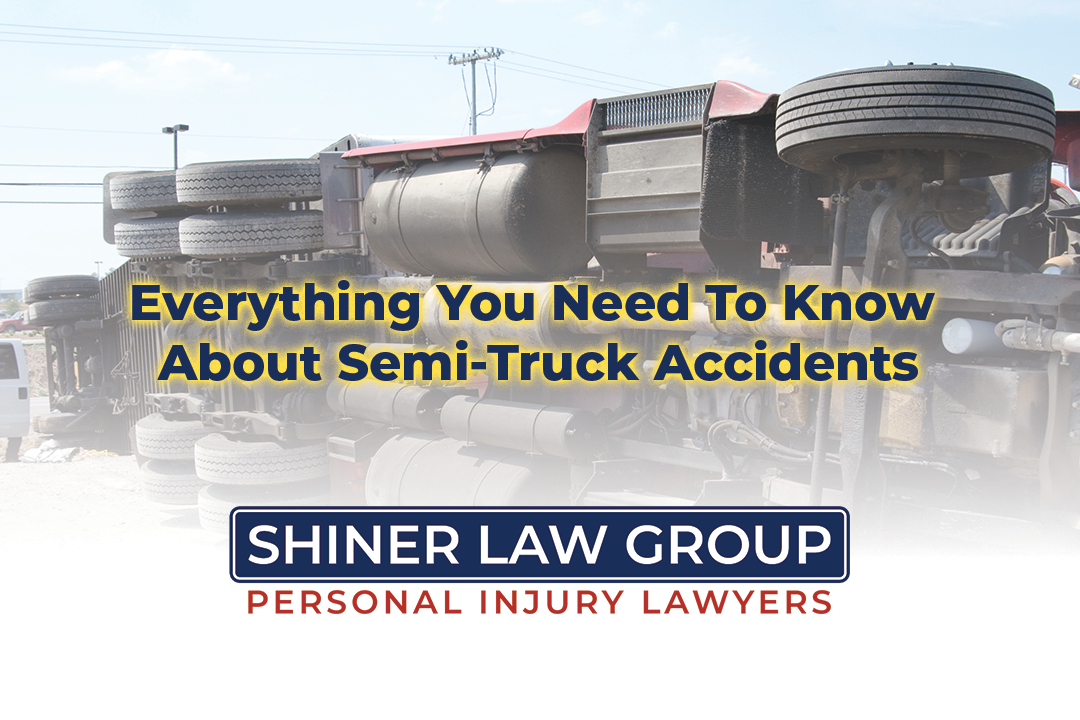
Semi-Truck Accidents and Fatalities
Understanding that semi-trucks, whether fully loaded or empty, are heavy and pretty much dwarf all other vehicles they share the roads with, it makes sense that they would cause immense chaos and destruction when they are in an accident. Sometimes, that chaos and destruction will culminate in people losing their lives. The same study published by the NSC revealed semi-trucks were involved in nearly 6,000 fatal collisions in 2021, an increase of 18% over 2020. So just like accidents that only result in property damage and physical injury, fatal accidents involving large semi-trucks are also trending up instead of down.
What Are the Most Common Types of Truck Accidents?
Despite accounting for less than 5% of all registered vehicles in the U.S., more than 13% of all fatal crashes involve at least one semi-truck. That’s according to a study published by the Federal Motor Carrier Safety Administration (FMCSA). And let’s not forget that each year these very vehicles have been involved in over 100,000 collisions since at least 2020. As far as what’s behind all of these fatal and non-fatal traffic accidents, there are multiple contributing factors. Some of the more notable ones include
Rollovers
Perhaps one of the most terrifying sights one could witness while on the road is a truck rollover. After all, it’s tons of metal, glass, and rubber barreling out of control and taking out everything in its path. It is not uncommon for such an event to have cars backed up for miles and cause interstate closures. Many also result in fatalities and are responsible for hundreds of thousands of dollars in property damage. While they can happen for various reasons, most rollovers occur when semi-trucks suddenly swerve to avoid an accident or try to go around tight turns too quickly. Speeding, fatigue, and driving under the influence are also factors in some rollover accidents.
Rear-End Collisions
Although rear-end collisions are seldom associated with semi-trucks, they are responsible for their fair share of them, studies show. In most cases, they collide with passenger vehicles rather than other semi-trucks. That said, the damage resulting from such a collision can cause serious injury to occupants inside those vehicles, not to mention extensive property damage. Generally speaking, when these trucks rear-end passenger vehicles on the road, it is due to speeding, tailgating, or just plain negligent driving. Fatigue, inexperience, and not observing the FMCSA-recommended safe following distances, which details how much space trucks need to slow down or stop to avoid a collision, also explain why semi-trucks cause rear-end accidents.
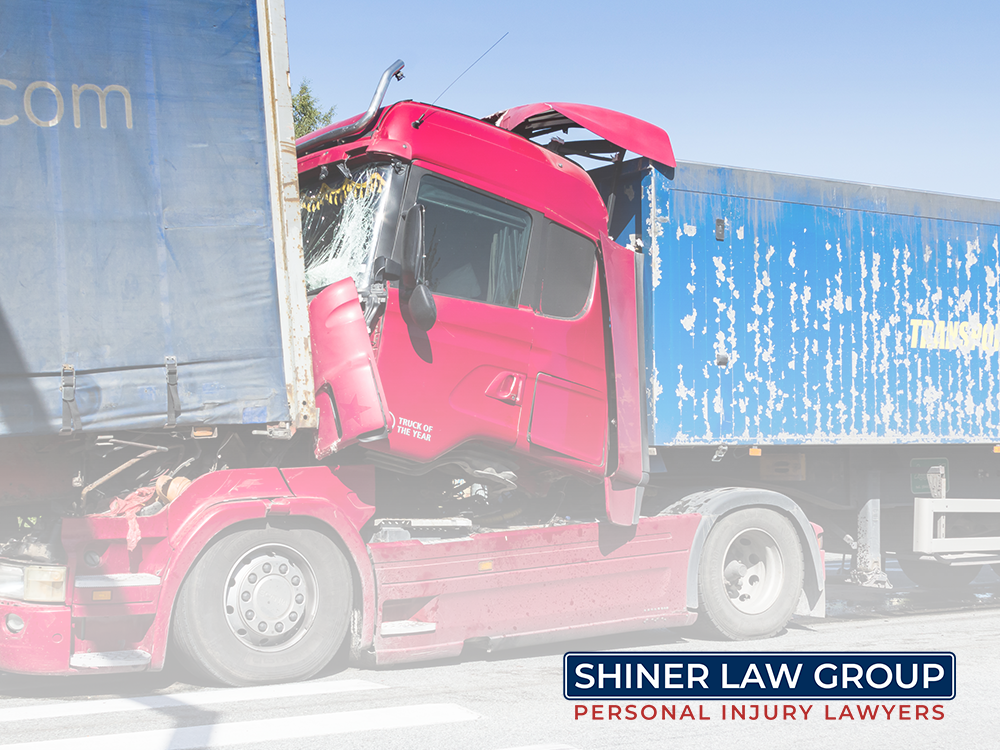
Head-on Collisions
Head-on collisions are another type of accident most people don’t associate with large semi-trucks but probably should. After all, they are responsible for their fair share of these horrific accidents. To put into perspective just how dangerous these types of accidents can be, we need only look at a study published by the global media company Forbes. It revealed that head-on collisions were responsible for over 10% of all fatal traffic accidents in 2020. It specifically mentions how more than 3,600 people lost their lives in head-on collisions that year before going on to attribute most of those horrific accidents to the following:
- Distracted driving
- Driver confusion
- Driving while intoxicated
- Fatigued driving
- Improper passing
- Reckless driving
Jackknife accidents
For those unfamiliar with the term, a jackknife accident refers to when a semi’s trailer moves out in front of the cab where the driver is located and forms a 90-degree angle at the tow hitch. For reference, the tow hitch is the point of connection for the trailer and cab of the semi-truck. Jackknife accidents are notorious for causing multi-vehicle pileups and shutting down interstates and highways for hours. According to the National Highway Traffic Safety Administration (NHTSA), jackknife accidents account for roughly 10% of all semi-truck occupant fatalities and about 4% of non-truck occupant fatalities. Common causes of jackknife accidents include the following:
- Distracted driving
- Equipment malfunction
- Hazardous road conditions
- Improper braking
- Oversteering or understeering while navigating curvy roads
- Speeding
Wide-Turn Accidents
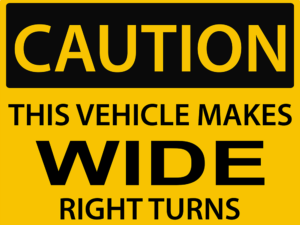
It is reasonably safe to say making a wide turn in a passenger vehicle is far easier than making one in a semi-truck. On average, a large semi-truck has a turning radius of approximately 55 feet compared to the 34 to 35 feet typical of most passenger vehicles. That huge turning radius of a large semi-truck means they often turn into lanes occupied by much smaller cars, trucks, and SUVs. And that opens the door to various truck-involved accidents, including head-on collisions, sideswipes, and T-bone accidents. Common causes for wide-turn accidents include the following:
- Distracted or fatigued driving
- Driver inexperience or incompetence
- Driving under the influence
- Failure to use turn signals
- Not checking side mirrors before making a wide turn
- Not swinging wide enough
- Reckless driving
- Swinging too far left or right
Sideswipe Accidents
In addition to wide turns, other things can contribute to sideswipe accidents that involve large semi-trucks. Of course, that’s not altogether too surprising considering how common sideswipe accidents are in the U.S. According to the Insurance Institute of Highway Safety (IIHS), an estimated 242,000 sideswipe accidents occur in the U.S. every year, with 27,000 and 2,500 resulting in injuries and fatalities, respectively. Along with wide turns, distracted driving, fatigued driving, aggressive driving, and driving under the influence are the primary causes of most sideswipe accidents.
Injuries Related to Semi-Truck Accidents
Injuries that can result from being involved in an accident with a semi-truck can run the gamut. The nature and severity of injuries can vary depending on the type of accident. That said, some of the more commonly reported and officially diagnosed injuries following most accidents involving semi-trucks include
Amputation Injuries
Because of the physical and psychological toll, amputation injuries are among the worst injuries someone can sustain during or after having been involved in an accident with a semi-truck. The force and pressure of the impact between a passenger vehicle and a much larger semi-truck can result in a severed limb, which happens on the spot. But it can also occur afterward in a hospital if a physician confirms that a limb has sustained severe tissue or nerve damage and has to remove it surgically. A limb might also have to be surgically amputated if it is adversely affected by poor blood circulation or severe infection. After having a limb amputated, most people need physical therapy to learn how to complete day-to-day tasks using a prosthesis. Many also need counseling with a licensed therapist to cope with post-traumatic stress disorder (PTSD) resulting from the accident and losing a limb.
Head and Brain Injuries
Easily one of the scariest and most life-changing injuries one can sustain following an accident with a semi-truck is a head or brain injury. Sadly, they are not uncommon. According to the Centers for Disease Control and Prevention (CDC), traffic accidents are among the most common causes of traumatic brain injuries (TBIs) and concussions. The organization further noted that an estimated 61,000 TBI-related deaths are reported in the U.S. each year. Some of the more common accident-related TBIs include the following:
- Concussion
- Contusion
- Hematoma
- Hemorrhage
Traumatic brain injuries can trigger a wide range of symptoms, the most common of which include the following:
- An inability to focus
- Anxiety
- Changes in mood or behavior
- Cognitive deficiencies
- Confusion
- Depression
- Irritability
- Memory loss
- Unpredictable temper outbursts
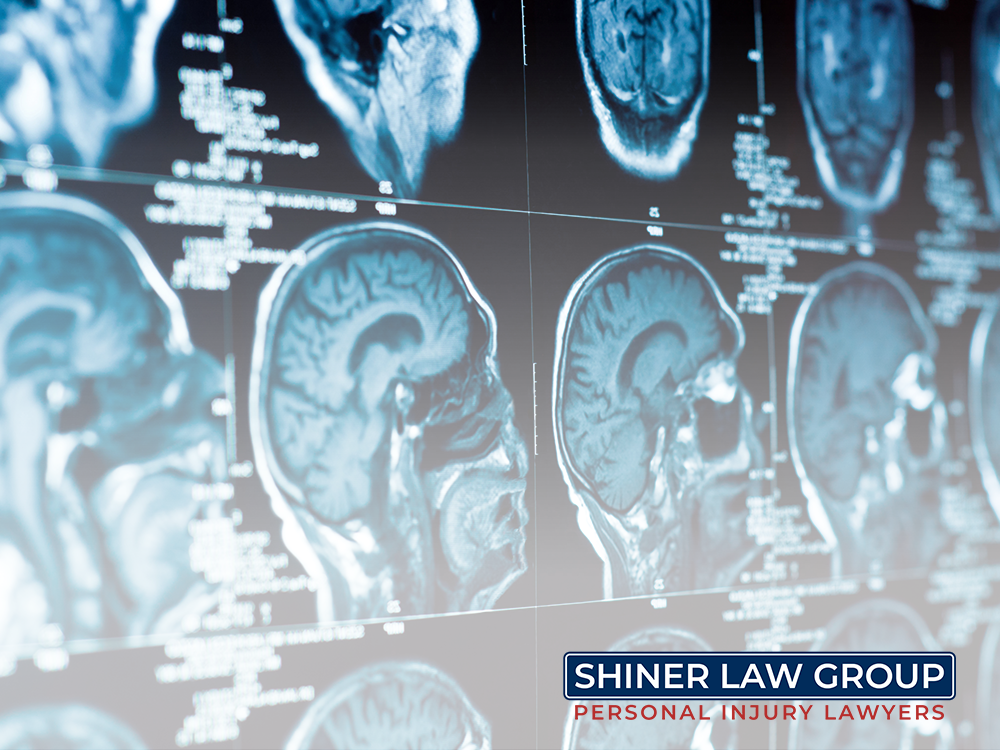
Broken Bones
When it comes to accidents involving large semi-trucks, broken bones are not uncommon. Some people sustain minor fractures that heal pretty quickly. Others, meanwhile, are left with broken bones that take months to heal. The kinds of broken bones commonly reported and diagnosed following an accident with a semi-truck include
Impacted bone fractures – Also known as a torus or buckle fracture, an impacted bone fracture refers to when two pieces of a fractured bone drive into each other.
Spiral bone fractures – Also known as torsion fractures, spiral fractures are broken bones caused by a twisting motion, which creates a fracture line that resembles a corkscrew that goes around the broken bone.
Complete fractures – As the name probably suggests, a complete bone fracture is a thoroughly broken bone. Generally speaking, complete bone fractures take the longest time to heal compared to other fractures and are often more susceptible to infection.
Comminuted bone fractures – Commonly occurring in the long bones of the arms and legs, a comminuted bone fracture is a term used to denote when a bone has shattered into multiple pieces. In addition to sports-related injuries, comminuted bone fractures often happen during high-impact traffic accidents. Common tell-tale signs of a comminuted bone fracture include intense pain, swelling, reduced mobility, and bruising.
Burns
Along with head injuries, broken bones, and amputation injuries, many people suffer first, second, third, or fourth-degree burns after being involved in an accident with a semi-truck. Studies show that such injuries can cause significant pain, scarring, disfigurement, and life-long struggles for survivors. The same applies to PTSD and other mental health disorders. Most burn-related injuries happen when semi-trucks carrying gas and other flammable liquids crash, causing those chemicals to spill on the ground, ignite, and burst into flames.
Spinal Cord Injuries
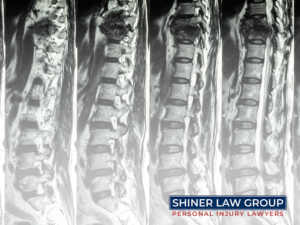
Some people, unfortunately, suffer a spinal cord injury after being involved in an accident with a semi-truck. Generally, this happens when individuals are in a crash severe enough to cause damage to the bones and disks in their back. Aside from complete paralysis, symptoms typical of a spinal cord injury include loss of muscle function, incontinence, and bone degeneration. While we are on the topic, severe head and neck injuries can also damage the spinal cord. And rapid back-and-forth head movements during a crash can result in whiplash.
Why Filing a Compensation Claim Is the First Real Step Toward Recovering From an Accident Involving a Semi-Truck
If you have been in an accident with a semi-truck, especially one involving injuries, you should consider filing a compensation claim. Doing so can help you pay what will likely be enormous medical bills and the cost of repairing or replacing your damaged vehicle. Of course, that’s only the start; you can also be compensated for lost wages if you can’t work due to injuries you sustained in the accident. But you should know the process is not the easiest. And that explains why most people seek the expertise of a licensed personal injury attorney to prepare compensation claim documents, negotiate settlement offers, and, if push comes to shove, represent them in a personal injury lawsuit.
Why You Should Still File a Compensation Claim Following a Semi-Truck Accident if You Live in a No-Fault State
When it comes to auto insurance, Florida is a no-fault state. That means all Florida drivers must carry personal injury protection (PIP) insurance, including those who drive semi-trucks. In an accident, PIP covers medical expenses and lost wages regardless of who is at fault for the accident. The issue, however, is in an accident with a semi-truck, PIP is seldom enough to cover someone’s medical bills or lost wages if they can’t work for several months due to a severe injury, such as broken bones or severe burns. To be adequately compensated, most people in this situation will file a compensation claim, which allows them to seek damages from the party responsible for causing the accident. So that everyone is on the same page, the monetary compensation one receives for the loss or injury caused by the wrongful act of another party is known as damages.
Why Most Compensation Claims Never Go to Trial
According to the National Center for State Courts, a non-profit organization focused on improving the administration of justice in the U.S., because most plaintiffs and defendants are interested in avoiding the uncertainty of a trial, not to mention the associated time and expense, over 95% of personal injury cases end up getting settled before trial. Since we are discussing settlements, the average estimated settlement amount for a non-fatal injury in an accident with a single semi-truck is around $195,000, according to the U.S. Department of Transportation. For some people, that is more than enough to cover medical bills and to help with lost wages. But for others, it doesn’t come close to being enough. And those individuals or their attorneys will want to negotiate an appropriate and fair settlement amount with the defendant.
Everything You Need To Know About Semi-Truck Accidents and How Settlement Amounts Get Negotiated
If you’re working with a personal injury attorney, one of the first things they will do before the negotiation process starts is establish liability. In other words, they will want to prove that the semi-truck driver is legally responsible for causing the accident that resulted in your losses. Those losses could be property damage, medical expenses, and so on. Once they establish liability, they can hold the semi-truck driver or the trucking company financially accountable. Most attorneys will reach such a conclusion if the driver engaged in any of the following examples of negligent acts:
- Drunk driving
- Failure to signal
- Failure to yield the right-of-way
- Hours-of-service violations
- Improper passing
- Impropriate wide-angle turns
- Speeding
- Tailgating
Assessing and Calculating Damages
If a semi-truck driver is responsible for causing the accident that upended your life, you are entitled to seek damages. When negotiating a settlement, those damages should fall into specific categories, which include:
Economic damages – These damages are the financial losses born from the accident. Examples include medical expenses, lost wages, and out-of-pocket expenses for canes, crutches, and other items you might need immediately after the accident.
Non-economic damages – These damages usually make up the bulk of most compensation claims since they encompass so many things, some of which include pain and suffering, emotional distress, and disability.
Evaluating Insurance Coverage
In Florida, drivers of passenger vehicles must carry a minimum of $10,000 in personal injury protection insurance. The minimum insurance requirement for semi-truck drivers is higher and very different. Instead of PIP, Federal law requires that interstate commercial truck drivers, which includes semi-truck drivers, transporting nonhazardous materials carry a minimum of $750,000 in liability insurance and $5 million if transporting hazardous materials. So that everyone is on the same page, liability insurance is a form of insurance that pays for the medical expenses of drivers and passengers in other vehicles if a commercial truck driver is responsible for causing an accident. Personal injury attorneys will typically look at how much liability coverage a semi-truck driver has as per their insurance policy, and they will use that to come up with an initial settlement offer.
The Official Start of Negotiations
After establishing liability, calculating accident-related damages, and taking stock of the liability insurance for the semi-truck driver, an attorney will begin formal settlement negotiations. The three steps involved in this process include
Sending a demand letter – This process entails an attorney sending a letter via certified mail to the semi-truck driver’s insurance company outlining the compensation needed for their client to recover from the accident.
Refusing the initial settlement offer – Since most insurance companies that provide insurance for semi-truck drivers reply to the demand letters with a low-ball settlement offer that does not come close to making their client whole after an accident, most will instruct their clients to refuse the initial settlement offer.
Negotiations – After refusing the initial settlement offer, most attorneys will negotiate with the insurance provider and try to increase the settlement amount on their client’s behalf. Sometimes, this will require going through multiple rounds of negotiations before possibly settling on a settlement amount. If neither side can agree on a settlement offer, the case eventually goes to trial and is decided by a judge or jury.
In summary, sharing the roadways with larger-than-life semi-trucks is unavoidable, especially if our commute requires getting on the highway, interstate, or both. That said, if we find ourselves in an accident with one of these vehicles, we have the right to file a compensation claim, which creates an opportunity for us to get the help we need to cover medical expenses and so much more. To learn more about filing a compensation claim or pursuing a personal injury lawsuit should that become necessary, consider a free consultation with the Shiner Law Group today.